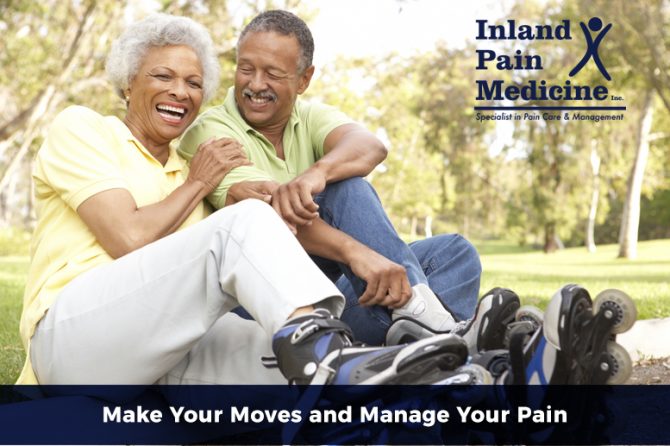
When you’re suffering from chronic pain, the last thing you want to do is move your body. Often, every fiber of your being reverberates with the desire to create a still environment. Your inner voice whispers that, when you are motionless, the pain will begin to subside.
More often than not, that inner voice and desire for physical stillness should be ignored. Movement helps mitigate many types of chronic pain, and has the added benefit of improving mobility. Research has demonstrated that exercise is helpful for chronic lower back pain, chronic neck pain, arthritis, and fibromyalgia. But not all exercise is created equal, and the type of movement you incorporate into your life should be tailored to the type of pain you experience.
Everyone’s familiar with “runner’s high,” the euphoric feeling that comes after a couple of miles on the road or treadmill. Contrary to common belief, that high isn’t triggered by endorphins, but is likely caused by endocannabinoids in the bloodstream. Less well known is that, following exercise, healthy pain-free individuals and those with osteoarthritis or rheumatoid arthritis experience a higher pain threshold. This is related to the release of endorphins and similar peptides, which activate the brain’s opioid receptors. But – and this is crucial – the endorphin response doesn’t activate for people with other types of chronic pain, like fibromyalgia. Relatedly, exercising muscles that are in pain doesn’t raise a person’s pain threshold, but exercising other muscles does.
The bottom line? When it comes to pain and exercise, one size doesn’t fit all. Find the right form of movement, though, and pain can be easier to tolerate, stamina can increase, and range of motion can improve. Following are some forms of exercise to consider.
Your Inner Dolphin
Many people with chronic pain find that water provides the perfect environment for movement and exercise. Buoyancy, achieved either naturally or with the help of a foam belt, enables movement with less energy. The resistance that water provides – which is much greater than air resistance – boosts stamina while strengthening muscles.
Water movement can take many different forms. For example, walking back and forth in a pool of slightly higher than waist-deep water can help sciatica and lower back issues. Those with fibromyalgia may find it helpful to do core-strengthening work in deep-water aerobics, water yoga, or water Pilates. Swimming laps might bring relief to others who experience chronic pain.
Laps on Land
Walking is always the off-the-cuff thought for anyone ready to incorporate more movement in their life. If you’re a land mammal and not a dolphin, walking may be for you. It’s something you can do around the block, on a scenic trail, or on a treadmill at home or in a gym. Like other forms of exercise that increase blood flow, walking can help boost neuroplasticity, which in turn helps the brain and body adapt to pain. Walking with chronic pain may require a few extra measures, so a supportive pair of walking shoes and walking sticks may come in handy. Scoping out accessibility by car before setting out on a walk can help ensure that, when you hit the trails, they don’t punch back.
Take it to the Mat
Yoga can consist of gentle, slow stretching or it can be a sweaty cardio workout. Those in chronic pain should look for the former and avoid the latter. In addition to the benefits of stretching, yoga’s breathing techniques can be helpful in dealing with pain. When looking for a yoga class or instructor, keep your eye out for those that incorporate adapted poses (done sitting in a chair, for example) and who have experience working with disabled people. If you find you’re in over your head during a class, adapt the pose to suit your body or quietly sit it out.
All About the Core
The importance of developing core strength for folks with chronic pain can’t be overstated. The greater the core strength, the less stress on other muscle groups and joints. Pilates offers core training, along with breathwork, that can be particularly beneficial for those with back pain or who have spinal injuries. Similar to the quest for a yoga instructor, the Pilates instructor you choose should have experience working with people in chronic pain or those who need adaptation.
Before you embark on your exercise regimen, it’s important to consult your healthcare team. They’ll give you recommendations and may be able to point you to instructors and facilities that are a good fit. Regardless of the form of movement you choose, appreciate your body for what it allows you to do and find joy in the new connections you make with your physical form.
Leave a reply








Leave a reply